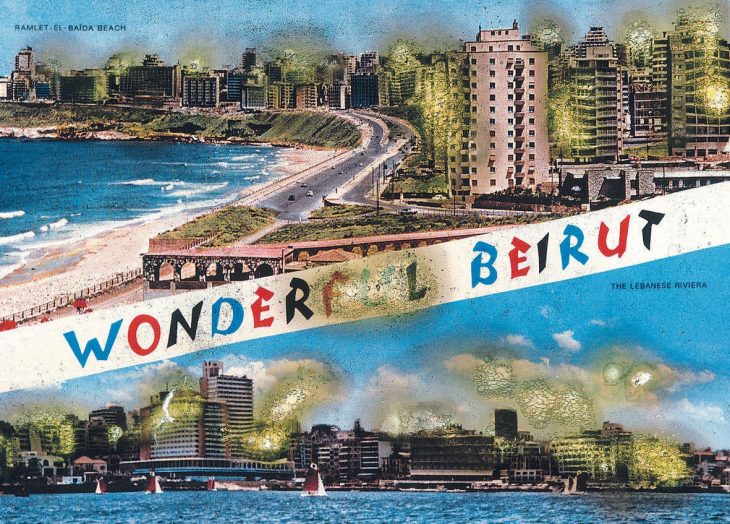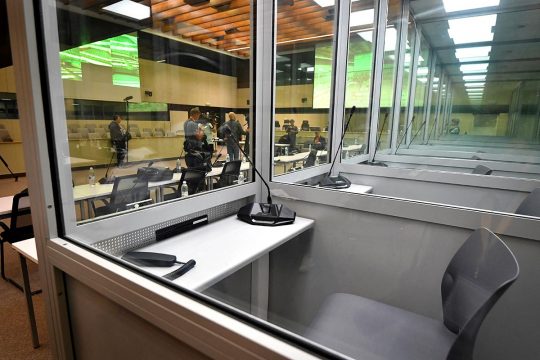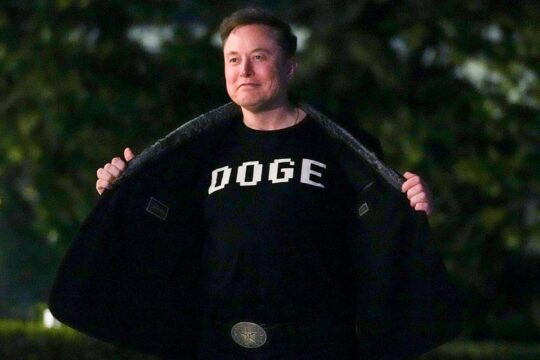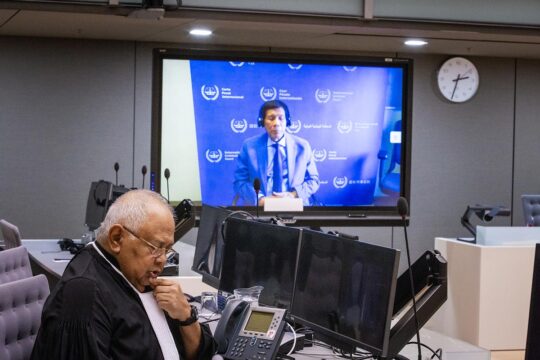In recent years, compelling funds have been directed to the creation of artistic and socio-cultural projects and institutions in Lebanon from the hands of the government, civil society, NGOs and private international entities. It has been argued that ‘peace monies’ are more readily available than mere ‘arts monies’, and with no doubt, the context of Lebanon serves as a prime example of how artistic initiatives can more accurately serve justice and peace-building efforts than aesthetic ones.
Historically, multi-sectarian Lebanon makes for a fascinating post-conflict case study. Not only was the country’s sectarian and confrontational nature one of the main factors to have triggered the 1975-1990 civil war, but also the main reason why this country is yet to transition from negative to positive peace. The complexity of this blood-soaked conflict was only outstripped by the level of complexity of the memory of the conflict.
The multifaceted Lebanese civil war allowed for an extremely wide range of experiences. As scholar Sune Haugbolle noted, the physically fractured public sphere of the war years also “created an ambiguous foundation for post-war nationalism, where memories of fraternity and sectarian separation blended, competed, and were manipulated by social and political actors”. Such ambiguities shaped memories and interactions in post-war Lebanon and added to the sense of being intimate strangers. The neighbourhoods of post-conflict Beirut were left heavily ghettoised, but so were the understandings of war.
Hariri’s new nationalism and historical amnesia
Beyond the extreme difficulty posed by these myriad competing narratives is the fact that not everyone agrees on talking about ‘the truth’ nor ‘their (personal) truths’. Moreover, when words do come out, they regularly take on unintended meanings as they are amended by different media outlets. On a more personal level, many Lebanese may have been discouraged from attaining the right to truth because the process of uncovering facts could deconstruct a major part of their beliefs, which for generations would have made up a large part of their identity.
Former Prime Minister Rafic Hariri already attempted to ameliorate the on-going tensions posed by the absence of an unanimously agreed, accessible truth, by designing a new nationalism for Lebanon that truly lived up to the words of the national anthem: Kullunalil-watan (We All Belong To The Nation). Essentially, a nostalgic memory culture which focused on turah (heritage). Haugbolle explained the logic of this approach: “Whereas they might disagree vehemently on the causes of the civil war, members of all sects and parties eat hummus, listen to Fairuz and dance dabke.” However, this prime example of escapism, also present in the architectural plans in downtown Beirut, gave way to yet more historical amnesia, the implications of which continued to be counterproductive. For, put simply, how are societies supposed to reconcile if they struggle to agree on what happened in the past?
Has contemporary art deconstruct sectarianism, or the opposite?
Opportunistically responding to calls for peace and justice investigation, as well as a reinvention of the process of war-time recollection, contemporary art in Lebanon offered a platform which could make great sense of the complexities so characteristic of inter-ethnic, national conflicts, and was understood as better at bringing together the multi-layered experiences, narratives and understandings of war.
The outstanding works of artists like Akram Zaatari, Walid Raad, Joana Hadjithomas, Khalil Joreige, Marwan Rechmaoui, and Lamia Joreige are worthy of admiration for their educational and reconciliatory efforts. Nevertheless, the modes of representation which have popularly been employed by contemporary artists deserve deeper scrutiny. After all, it should not come as a surprise that the arts might have something to do with the fact that many Lebanese feel that they are still living the war even though a peace has been declared. Unfortunately, it is very questionable how (if at all) contemporary artistic efforts have crystallised in an authentic restoration of relationships within Lebanese society.
For their praised general accessibility, museums and public memorials have been deemed most appropriate when it comes to establishing the collective memory which may invoke the shared emotions and consciousness necessary for reconciliation. It has been said that if public, multi-vocal, open-ended art continues to deconstruct sectarianism, “it will be possible to arrive at a true Lebaneseness”. However, others have pointed out that even these efforts continue to ‘indoctrinate’ the population, and that this approach is inexpedient and actually re-entrenches sectarian affiliations on the basis of exclusivity. The problem can be addressed from a more meaningful perspective when we realize that such approaches to art also have another thing in common: they consist on a consideration of post-civil war artistic and sociocultural projects as products. They are socio-economically privatised and artificially constructed. However, some art, mostly in the form of participatory performances, have managed to escape this rubric.
Museums: more of what you want, more of what you already knew
Though exhibited in public spaces technically open to all white cube art – a gallery aesthetic characterised by its square white walls and a light source usually from the ceiling – are private and privatised. Museum-visiting is best described as a profit-making leisurely cultural activity, particularly in the Arab world, as mere access to it requires time and, more often than not, money. Lebanon is no different. For instance, Beit Beirut, a museum and urban cultural centre located in the capital’s former Green Line, has been described as a place which is used more “for commercial hire than pedagogical curation”. There have been complaints that it “seems to be open only for special events” and that exhibitions focused around contesting the one historical event that constitutes the basis of the present regime in Lebanon - that is, the civil war - have simply not been made available for the general public.
Accordingly, those who can afford it become educated and may interiorise an understanding of the past. However, in doing so, the Lebanese appear to have interiorised diverging understandings of the past depending on the institution they have acquired the said knowledge from. For instance, at the Hezbollah-run Mleeta Resistance Tourist Landmark in south Lebanon, Hezbollah assumes the role of Lebanon’s national defender against Israeli aggression, a so-called ‘consequence of the military failings of the state apparatus’. Online reviews attest to the partisan bias which is obviously embedded in the memories of conflict of this museum. Many Lebanese, particularly Christians and Druzes, resist the idea of visiting such a “place of propaganda”.
Ultimately, recipients of Mleeta-made ‘information’, constituted of the Lebanese Shiite majority, are being fed more of what they wanted, and more of what they already knew, or, better phrased, thought they knew. It has been argued by scholars that the museum plays an important role in the creation of an “Islamic milieu”. This epistemological approach makes us see the world ‘not as it is, but as we are’. As American philosophy professor Michael Patrick Lynch brilliantly put it, “bubble-knowing involves always being right”. The danger is that by one-dimensionalising issues and events, and by attempting to gain an understanding of them from a singular perspective, the scope for authentic inter-sectarian comprehension disappears.

The limits of a conservative approach
Also problematic is the common conception of museums as temples of knowlege and information which drives people to look right through narrative tools without recognising their power in shaping how the past is represented. These dynamics exert a conservative yet unnoticed force on collective memory, unfortunately making it very resistant to change. From this, it should not come as a surprise that the Lebanese might find themselves in a paradoxical situation of thinking that by visiting these museums they know much more, when in reality they are yet to agree on what it is that they actually know.
By distinguishing action (praxis) from fabrication (poiesis), by linking it to freedom and plurality, and by showing its connection to speech and remembrance, Hannah Arendt was able to articulate a conception of political life in which questions of historical meaning and identity could be addressed in a fresh and original manner. Dialogical and social action become reflexive and self-conscious, consensus never forced, and dialogue truly unconstrained. This phenomenon does not seem to have much future in the contemporary arts in Lebanon as we have known them so far. However, there is significant potential for something similar in the performative/participatory arts.
Talking about the new Beirut through interactive live art
The Dictaphone Group, a Beirut-based collective of ‘live’ art and urban research, makes for a prime example of how and why these arts can make up for the counterproductive deficiencies of the already examined 'orthodox' contemporary artists in a context such as the Lebanese. As part of one of many performances and throughout 10 consecutive days in 2012, the group performed a site specific performance that explored the concepts of access to the sea and public space in general through an analysis of Beirut’s seafront. Twice daily, 5 random audience members were invited to take part in a journey on a fishing boat.
In an effort to re-examine the Beiruti understanding of public space and to re-imagine the city, the performance encouraged an organic conversation about land ownership of Beiruti’s seafront, the laws that govern it, and the practices of its users in a journey from the Ein el-Mreisse port to Ramlet el-Baida beach. This performance tackled the fact that since the end of the Lebanese civil war, and as part of the already mentioned memory-erasing reconstruction project, Beirut has also been witnessing further exclusions through the gradual disappearance of coastal lands accessed by the public. More recently, this could be seen in the case of the sea front extension, Zaytouna Bay in Solidere, a new marina area created over the rubbles of the historic fishermen port of the city now turned into one of the most expensive real-estate projects in the region.
Bringing other audiences into the national conversation
In an interview, the collective explained that they had for long paid close attention to the differentiation between politics-as-content and the political-as-form: “We do not just relate to residents/inhabitants of spaces or to the audiences. Rather, we collaborate with them. Every individual's personality and interests affect how the performance unfolds. We encourage that and do not try to control it” says Dictaphone Group co-founder Tania El Khoury. Control, El Khoury argued, “imposes discipline on participation, like telling the audience: 'We are in a conversation, but you cannot talk'.” This draws significant parallels with Arendt's favoring of human action as an innovative way to address issues regarding truth, history and identity, for it facilitates peaceful plurality in several ways.
The self-understanding and identities of various groups became free and able to be expressed in the public arena. The methodology followed a bottom-up approach to the memory of conflict(s). Beyond the healthy inclusivity promoted by their bottom-up nature, is the pop-up fashion of these performances. Located in frequented, urban spaces, interactive live art generates an exposure for larger society, including citizens who would not frequent a museum or who would only frequent specific artistic institutions.
In fact, similar studies targeting the Balkan region, have concluded that dealing with the past (and its left-overs in the present) behind closed doors does not work anymore and that, statistically, it is after public workshops that people are much more susceptible to accept and include the other in the national/regional narrative of past conflict. As Lynch noted, understanding involves more than just “downloading” information. It requires, in his words, “doing some work for yourself: having a little creative insight, using your [own] imagination, getting out into the field, doing the experiment, working through the proof, talking to someone”.
Emotions connected to reconciliation and peaceful understanding
Including bodily, emotional and spiritual communication, and therefore requiring not complete oral or grammatical compressibility, also allows for information to reach a wider audience, particularly in ‘developing’ countries. In short, this art only requires societal interaction, instead of societal integration with one (or more) pre-fabricated narratives. Despite accepting the pre-established interests of different peoples, the possibility of them coming together under a yet additional communal identity (for they are all participating in this process of discovery together and that generates another, new sense of general belonging) is promoted. There are no ideas to hold on to in fear that their elimination might delete or de-legitimise a part of one’s identity, which also facilitates a readiness to recognize ‘the other’ and her/his experience. This can achieve feelings of solidarity instead of compassion, and courage instead of fear; emotions which truly connect with ideas of understandings and reconciliation.
It now seems natural that the focus of truth-finding ought to be the post-conflict narrative’s constituent components: People. Socialised people can deconstruct previously egocentric, self-dependent metanarratives of the past. In its natural similitude to social discourse practices, this art consists on getting to know the teller as much (if not more) than the tales. After all, truth is never unanimous nor all-encompassing. Only through breaking it down and understanding its conforming pieces (people’s experiences), can survivors (and the generations that follow them) thrive for genuine understanding. They deserve this, and not an artificial concoction. If anything, this is the closest we can get to the false notion of universal ‘reality’ which we have liked to fantasize about for too long now. And with this, the closest we can get to kick-starting a process of peaceful comprehension.
 RUTH ARTILES VALERO
RUTH ARTILES VALERO
Ruth Artiles Valero is a political scientist originally from the Canary Islands. Most recently, she finalized an MSc on ‘The Politics of Conflict, Rights, and Justice’ from the School of Oriental and African Studies (SOAS), University of London. Her interdisciplinary research notably combines politics and the arts. Her areas of expertise include peacebuilding, reconciliation, memories of violence, migration and diaspora studies.






